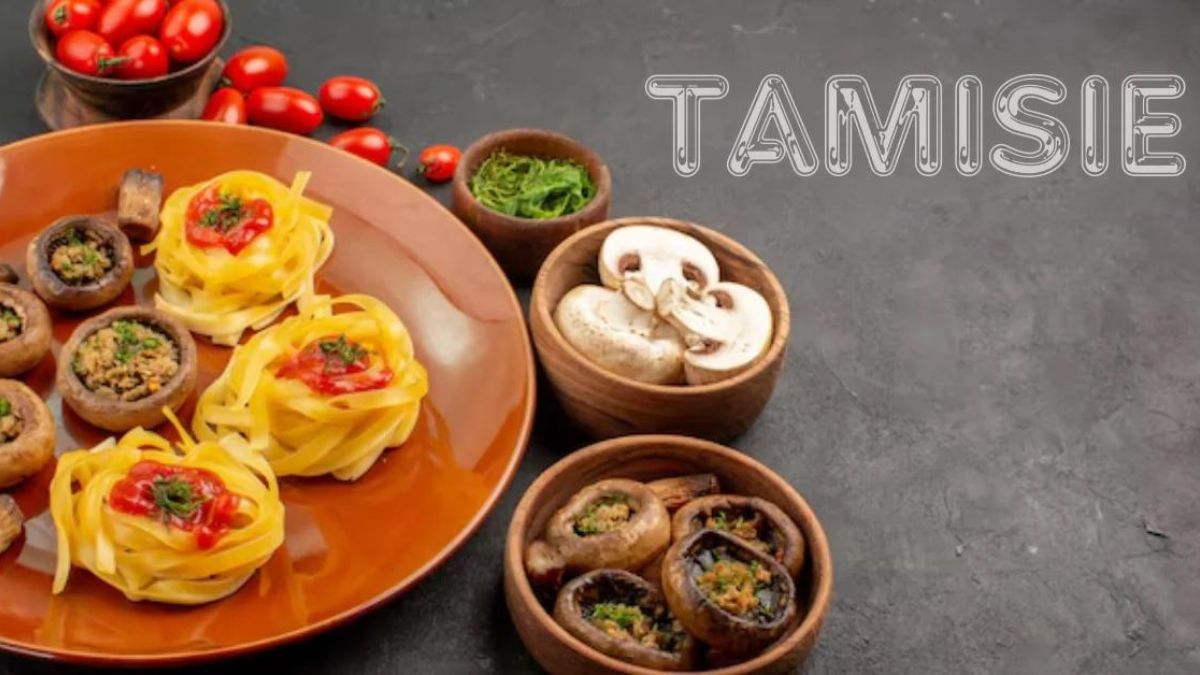Lifestyle
Unveiling the amaziğ Legacy: North Africa’s Indigenous Custodians

Introduction
North Africa, a region rich in history and cultural diversity, is home to the indigenous Amazigh people, alternatively known as Berbers. This post aims to explore the profound legacy of the Amazigh, who have been the custodians of North African heritage for millennia. Known for their distinctive culture, language, and traditions, the Amazigh people have left an indelible mark on the region’s history.
Definition of the Amazigh People and Their Alternative Name, Berbers
The term “Amazigh” (singular) or “Imazighen” (plural) refers to the free people indigenous to North Africa. The word “Berber,” used interchangeably, is derived from the Greek “barbaros,” meaning “foreigner.” While “Berber” is widely recognized, many prefer “Amazigh” as it reflects their identity and heritage more accurately.
Overview of Their Indigenous Status and Distribution in North Africa
The Amazigh people are spread across North Africa, predominantly in Morocco, Algeria, Libya, Tunisia, Mali, and Niger. They inhabit regions ranging from the Mediterranean coast to the Sahara Desert. Despite their widespread distribution, the Amazigh have maintained a strong sense of identity and cultural cohesion.
Historical Significance
The Origins of the Amazigh People and Their Pre-Arab Presence in North Africa
The origins of the Amazigh people trace back thousands of years, long before the Arab conquest of North Africa in the 7th century. Archaeological evidence suggests that the Amazigh have inhabited the region since at least 3000 BCE. Their presence predates the arrival of Phoenicians, Greeks, and Romans, making them one of the oldest continuous cultures in North Africa.
The Role of the Amazigh in Ancient Civilizations and Their Interactions with Greeks, Carthaginians, and Romans
The Amazigh played a significant role in ancient North African civilizations. They established powerful kingdoms, such as Numidia and Mauretania, and engaged in trade and cultural exchanges with neighboring civilizations. The Amazigh interacted with the Greeks and Carthaginians, adopting and influencing aspects of their cultures.
During the Roman period, the Amazigh were integral to the region’s political and military landscape. Notable figures such as King Juba II of Numidia exemplify the Amazigh’s contributions to North African history. Despite Roman colonization, the Amazigh retained their distinct identity and continued to influence the region’s cultural and social fabric.
Cultural and Religious Identity
Exploration of the Amazigh as a Cultural and Religious Entity
The cultural and religious identity of the Amazigh is deeply rooted in their history and traditions. They have a rich heritage of oral literature, music, dance, and art that has been passed down through generations. The Amazigh culture is characterized by its emphasis on community, hospitality, and respect for nature.
The Impact of Amazigh Culture and Religion on Human History
The Amazigh have practiced various forms of spirituality and religion throughout history. Before the spread of Islam, they followed indigenous beliefs, often centered around nature worship and ancestor veneration. The arrival of Islam in the 7th century brought significant changes, but many Amazigh communities integrated Islamic practices with their traditional beliefs.
The Amazigh have contributed to the cultural diversity of the Islamic world. Their unique blend of customs, rituals, and artistic expressions has enriched the broader tapestry of human history.
Language and Linguistics
The Berber Languages, Part of the Afroasiatic Language Family
The Amazigh languages, collectively referred to as Berber languages, belong to the Afroasiatic language family. These languages are spoken across North Africa and are characterized by their linguistic diversity and complexity.
The Diversity and Characteristics of the Various Amazigh Dialects
The Amazigh languages encompass several dialects, including Tamazight, Tachelhit, Tarifit, and Kabyle, among others. Each dialect reflects the unique cultural and historical experiences of different Amazigh communities. Despite the variations, there are common linguistic features that unite the Amazigh languages.
Efforts to preserve and promote the Amazigh languages have gained momentum in recent years. Countries like Morocco and Algeria have recognized Tamazight as an official language, reflecting a growing appreciation for the linguistic heritage of the Amazigh people.
Social Structure and Community Life
The Traditional Social Organization of Amazigh Communities
Amazigh society is traditionally organized around tribal and clan structures. These social units play a crucial role in maintaining community cohesion and managing resources. Leadership within Amazigh communities is often based on consensus and collective decision-making.
The Importance of Land and Community in Amazigh Culture
Land holds significant cultural and economic value for the Amazigh people. Traditional practices of agriculture, herding, and land stewardship are integral to their way of life. The concept of “iguelmim” (community) emphasizes the interconnectedness of individuals and their responsibilities towards one another.
Agricultural Practices and Celebrations
Amazigh Traditions Related to Agriculture and the Celebration of Harvests
Agricultural practices are deeply embedded in Amazigh culture. They have developed sustainable farming techniques that reflect their intimate knowledge of the land. The agricultural calendar is marked by various celebrations and rituals, such as the “Aid Amun” (New Year) and “Imilchil Marriage Festival,” which honor the cycles of nature and agricultural abundance.
Festivals and Rituals That Showcase the Cultural Richness of the Amazigh
Amazigh festivals and rituals are vibrant expressions of their cultural heritage. The “Yennayer” (Amazigh New Year) and “Assegnou” (Spring Festival) are celebrated with music, dance, feasting, and traditional attire. These events provide an opportunity for the community to come together and celebrate their shared identity.
Contemporary Challenges and Resilience
Modern-Day Issues Faced by the Amazigh People, Including Cultural Preservation and Political Recognition
The Amazigh people face several contemporary challenges, including the preservation of their cultural heritage and achieving political recognition. Efforts to promote the Amazigh language and culture have gained traction, but there are still obstacles to overcome.
Political recognition remains a contentious issue, with many Amazigh communities advocating for greater autonomy and representation. Despite these challenges, the Amazigh have demonstrated remarkable resilience and determination in preserving their identity.
Examples of Amazigh Resilience and Adaptation to Contemporary Times
The Amazigh people have adapted to modernity while maintaining their cultural roots. They have embraced new technologies, entrepreneurship, and education to navigate contemporary challenges. Initiatives such as Amazigh cultural centers, language schools, and advocacy organizations have played a crucial role in promoting their heritage.
YOU MAY ALSO LIKE
Çeciir: A Dive into Turkey’s Culinary Heritage
Conclusion
The legacy of the Amazigh people is a testament to their enduring spirit and cultural richness. As the indigenous custodians of North Africa, the Amazigh have made significant contributions to the region’s history, culture, and social fabric. Their resilience in the face of contemporary challenges underscores the importance of preserving and celebrating their heritage.
By understanding and appreciating the Amazigh legacy, we gain a deeper insight into the cultural tapestry of North Africa and the remarkable diversity of human civilization.
For those interested in delving deeper into the world of the Amazigh, this post offers a glimpse into the rich history and cultural heritage of a people who have shaped North Africa for millennia. As cultural enthusiasts, history buffs, and travel aficionados, we can all draw inspiration from the legacy of the Amazigh and their enduring contributions to our shared human story.
Frequently Asked Questions (FAQs)
1. Who are the Amazigh people?
The Amazigh, also known as Berbers, are the indigenous people of North Africa with a rich cultural heritage spanning thousands of years.
2. What languages do the Amazigh people speak?
The Amazigh languages, collectively known as Berber languages, include dialects such as Tamazight, Tachelhit, Tarifit, and Kabyle.
3. What is the significance of agricultural practices in Amazigh culture?
Agriculture is a cornerstone of Amazigh culture, with sustainable farming techniques and harvest celebrations deeply rooted in their traditions.
4. How do the Amazigh celebrate their cultural heritage?
Amazigh festivals like Yennayer (Amazigh New Year) and Assegnou (Spring Festival) showcase music, dance, traditional attire, and communal feasting.
5. What challenges do the Amazigh people face today?
Contemporary challenges for the Amazigh include cultural preservation, political recognition, and advocating for greater autonomy and representation.
Lifestyle
Discovering Tamisie From Ancient Grains to Modern Delights

Tamisie is a culinary gem that has been celebrated for centuries for its rich flavors, versatility, and nutritional benefits. This blog post explores the delightful world of Tamisie, taking you on a culinary voyage through its history, recipes, health benefits, and cultural significance. Whether you’re a foodie, health enthusiast, or culinary explorer, this guide will provide you with valuable insights into this fascinating ingredient.
The Origins of Tamisie
Tamisie traces its roots to the heart of Southeast Asia, where it has been a staple in traditional diets for generations. Known for its unique blend of grains, vegetables, and other ingredients, Tamisie has evolved over time while maintaining its cultural significance. Historically, it was a vital part of communal feasts and ceremonies, symbolizing abundance and prosperity.
The name “Tamisie” itself is derived from ancient dialects, reflecting its deep connection to the land and its people. Farmers carefully cultivated the grains used in Tamisie, selecting only the best to ensure a high-quality dish. This meticulous process has been passed down through generations, preserving the authenticity of Tamisie.
In modern times, Tamisie has gained international recognition, appreciated for both its taste and its nutritional profile. Food enthusiasts worldwide are now discovering the ancient secrets of this remarkable dish.
What Makes Tamisie Unique?
Tamisie stands out due to its exceptional combination of flavors and textures. The dish typically includes a variety of grains such as rice, barley, and millet, each contributing its distinct taste and nutritional benefits. These grains are often mixed with an array of vegetables, herbs, and spices, creating a harmonious blend that delights the palate.
One of the key features of Tamisie is its versatility. It can be enjoyed as a hearty main course, a side dish, or even a nutritious breakfast option. The flexibility of Tamisie allows for endless culinary creativity, making it a favorite among chefs and home cooks alike.
Another unique aspect of Tamisie is its preparation method. Traditionally, the grains are soaked and cooked slowly to enhance their natural flavors and nutrients. This method not only preserves the integrity of the ingredients but also results in a dish that is both satisfying and nourishing.
Health Benefits of Tamisie
Tamisie is not only delicious but also packed with health benefits. The combination of whole grains and fresh vegetables provides a rich source of essential nutrients, including vitamins, minerals, and antioxidants. These nutrients play a crucial role in maintaining overall health and well-being.
One of the primary benefits of Tamisie is its high fiber content. The whole grains used in the dish are excellent sources of dietary fiber, which aids in digestion, promotes a healthy gut, and helps regulate blood sugar levels. Additionally, fiber can contribute to a feeling of fullness, making Tamisie a great option for those looking to manage their weight.
The vegetables in Tamisie offer a wealth of vitamins and minerals, such as vitamin C, vitamin A, potassium, and folate. These nutrients support various bodily functions, from boosting the immune system to promoting healthy skin and vision. The antioxidants found in many of the ingredients help combat free radicals, reducing the risk of chronic diseases.
Furthermore, Tamisie is a heart-healthy choice. The grains and vegetables are low in saturated fat and cholesterol, making it an ideal dish for those aiming to maintain cardiovascular health. The presence of healthy fats from added nuts or seeds can also contribute to balanced nutrition.
Exploring Tamisie Recipes
Creating Tamisie at home can be a rewarding culinary experience. Here are some simple and delicious recipes to get you started:
Classic Tamisie Bowl
Ingredients:
- 1 cup brown rice
- 1/2 cup barley
- 1/4 cup millet
- 2 cups mixed vegetables (carrots, bell peppers, peas)
- 2 cloves garlic, minced
- 1 tsp turmeric
- Salt and pepper to taste
- Fresh herbs (cilantro, parsley) for garnish
Instructions:
- Rinse the grains thoroughly and soak them in water for at least 30 minutes.
- Cook the grains in a large pot with 4 cups of water until tender.
- In a separate pan, sauté the garlic and vegetables with turmeric, salt, and pepper.
- Mix the cooked grains and vegetables, and garnish with fresh herbs. Serve warm.
Tamisie Breakfast Porridge
Ingredients:
- 1 cup rolled oats
- 1/2 cup quinoa
- 1/4 cup chia seeds
- 2 cups almond milk
- 1 tsp cinnamon
- 1 tbsp honey
- Fresh berries and nuts for topping
Instructions:
- Combine oats, quinoa, chia seeds, almond milk, and cinnamon in a pot.
- Cook over medium heat, stirring occasionally, until the mixture thickens.
- Sweeten with honey and top with fresh berries and nuts. Enjoy hot.
Spicy Tamisie Stir-Fry
Ingredients:
- 1 cup jasmine rice
- 1/2 cup farro
- 1/4 cup amaranth
- 1 cup broccoli florets
- 1 red chili, sliced
- 1 tbsp soy sauce
- 1 tbsp sesame oil
- 2 green onions, chopped
Instructions:
- Cook the jasmine rice, farro, and amaranth as per package instructions.
- In a wok, heat sesame oil and stir-fry the broccoli and chili until tender.
- Add the cooked grains and soy sauce, stirring well.
- Garnish with green onions and serve immediately.
Cultural Significance of Tamisie
Tamisie holds a special place in the cultural traditions of Southeast Asia. It is often prepared during festivals, family gatherings, and celebrations, symbolizing unity and togetherness. Each region has its unique variation of Tamisie, reflecting local tastes and ingredients.
In many cultures, Tamisie is more than just a meal; it is a way to connect with heritage and pass down traditions. The process of making Tamisie often involves multiple generations working together, sharing stories, and preserving culinary knowledge. This communal aspect adds to the richness of the dish and reinforces its cultural importance.
The popularity of Tamisie has also spread beyond its place of origin, finding its way into global cuisine. International chefs and food enthusiasts are experimenting with Tamisie, adapting it to suit diverse palates while respecting its traditional roots.
Tamisie in Modern Culinary Trends
In recent years, Tamisie has gained attention as a trendy and health-conscious option in the culinary world. Its adaptability to various diets, including vegan and gluten-free, has made it a favorite among health enthusiasts and food bloggers.
Restaurants and cafes are now featuring Tamisie on their menus, offering innovative takes on the classic dish. From gourmet Tamisie bowls to fusion-inspired creations, the possibilities are endless. This modern revival of Tamisie showcases its timeless appeal and its ability to evolve with changing food trends.
Social media platforms are also buzzing with Tamisie recipes and cooking tips. Influencers and chefs are sharing their unique versions of the dish, inspiring home cooks to experiment and create their interpretations. The hashtag #Tamisie has become a popular trend, connecting a community of Tamisie lovers worldwide.
How to Incorporate Tamisie into Your Diet
Incorporating Tamisie into your daily meals can be both enjoyable and beneficial. Here are some tips to help you get started:
- Start Simple:
Begin with one of the basic Tamisie recipes mentioned earlier. Familiarize yourself with the ingredients and flavors before experimenting with more complex dishes.
- Mix and Match:
Don’t hesitate to customize Tamisie according to your preferences. Add your favorite vegetables, spices, and proteins to create a dish that suits your taste.
- Meal Prep:
Tamisie is a great option for meal prepping. Cook a large batch and portion it out for the week. It can be easily reheated and enjoyed on busy days.
- Explore Varieties:
Experiment with different grains and vegetables to discover new flavor combinations. Each variation of Tamisie offers a unique taste and nutritional profile.
- Share with Others:
Prepare Tamisie for family and friends, and introduce them to this wonderful dish. Sharing Tamisie can create memorable experiences and foster a sense of community.
The Future of Tamisie
As we look to the future, Tamisie is poised to continue its rise in popularity. Its rich history, nutritional benefits, and culinary versatility make it an enduring favorite among food enthusiasts. The global interest in health-conscious eating and sustainable food practices further supports the growth of Tamisie.
Innovations in agriculture and food technology may also contribute to the evolution of Tamisie. Farmers and chefs are collaborating to cultivate new varieties of grains and vegetables, enhancing the flavor and nutritional value of the dish. These advancements ensure that Tamisie remains relevant and exciting for generations to come.
YOU MAY ALSO LIKE
Cassasse: More Than Just a Dish – A Cultural Reflection
Conclusion
Tamisie is more than just a trendy ingredient; it is a culinary masterpiece that bridges the past and the present. Its rich flavors, health benefits, and cultural significance make it a unique and valuable addition to any diet. Whether you are a seasoned chef or a home cook, Tamisie offers endless possibilities for culinary exploration.
We invite you to join the Tamisie community and discover the joys of this remarkable dish. Try out the recipes, share your creations, and connect with fellow food enthusiasts. Together, let’s celebrate the rich heritage and bright future of Tamisie.
For more information and detailed guides on how to incorporate Tamisie into your daily life, sign up for our newsletter and stay updated with the latest trends and recipes. Happy cooking!
FAQs about Tamisie
- What is Tamisie?
Tamisie is a traditional Southeast Asian dish made with various grains and vegetables, often served at festivals and family gatherings.
- How is Tamisie prepared?
Tamisie is typically made by cooking a combination of grains such as jasmine rice, farro, and amaranth with stir-fried vegetables and sauces.
- Is Tamisie gluten-free?
Yes, Tamisie can be made gluten-free by using grains like quinoa or rice, making it suitable for those with gluten sensitivities.
- Can Tamisie be meal prepped?
Absolutely! Tamisie is great for meal prepping. Cook a large batch and portion it out for the week for easy reheating.
- What are the health benefits of Tamisie?
Tamisie is packed with nutrients from the various grains and vegetables, providing a healthy balance of carbs, proteins, and essential vitamins.
Lifestyle
Life’s Journey Unveiled through Stages of Growth

Introduction
Life is a beautiful, intricate journey composed of various stages, each with unique challenges, joys, and opportunities for growth. From infancy to adulthood and beyond, understanding these stages can help us harness their potential for personal development. Whether you’re an educator, personal development enthusiast, or simply curious about life’s phases, this guide will provide insights into the stages and how to make the most out of each one.
In this blog post, we’ll explore the stages of life, focusing on Erik Erikson’s eight distinct stages of psychosocial development. We’ll discuss the characteristics of each stage, the challenges faced, and the opportunities for growth. By the end, you’ll have a comprehensive understanding of life’s stages and practical tips for navigating them.
Infancy
Infancy is the first stage of life, spanning from birth to around 18 months. During this time, babies undergo rapid physical, emotional, and cognitive development. Trust versus mistrust is the primary conflict faced in this stage, as infants learn to trust their caregivers for their basic needs.
Babies develop a sense of trust when caregivers provide consistent care, love, and attention. This trust forms the foundation for healthy relationships in the future. Conversely, inconsistent or neglectful care can lead to feelings of mistrust and insecurity.
Physical milestones in infancy include rolling over, sitting up, and eventually taking those first precious steps. Cognitive development is also significant, as babies begin to recognize faces, respond to their names, and explore their surroundings with curiosity.
Toddlerhood
Toddlerhood, from 18 months to around 3 years, is characterized by increased independence and exploration. The primary conflict in this stage is autonomy versus shame and doubt. Toddlers strive to assert their independence while seeking approval from their caregivers.
During this stage, children learn to walk, talk, and develop fine motor skills. They become more aware of their emotions and start to express themselves through language and play. Encouraging autonomy and providing a safe environment for exploration is crucial for fostering confidence and self-esteem.
To support your toddler’s development, create opportunities for independent play, encourage decision-making, and establish routines that provide structure and security. Ensure they feel loved and supported as they venture into the world around them.
Preschool Years
The preschool years, from ages 3 to 6, are marked by significant social and emotional growth. The primary conflict in this stage is initiative versus guilt. Children begin to take initiative in their activities, exploring new ideas and experimenting with different roles.
During this stage, children develop their imagination, creativity, and social skills. They engage in pretend play, form friendships, and learn to cooperate with others. Encouraging their curiosity and providing opportunities for creative expression can help them build a strong sense of initiative.
To support your preschooler’s development, engage in imaginative play, read books together, and encourage participation in group activities. Be patient and understanding as they test boundaries and explore their independence.
Early School Years
The early school years, from ages 6 to 12, are characterized by the development of industry versus inferiority. Children begin formal education, acquire new skills, and face academic and social challenges. A sense of industry develops when children feel competent and successful in their efforts.
During this stage, children develop critical thinking, problem-solving, and social skills. They form friendships, participate in extracurricular activities, and learn to manage responsibilities. Encouraging a growth mindset and celebrating their achievements can help them build confidence and resilience.
To support your child’s development during the early school years, encourage a love of learning, provide opportunities for skill-building, and foster a positive attitude towards challenges. Support their social development by facilitating friendships and encouraging teamwork.
Adolescence
Adolescence, from ages 12 to 18, is a time of significant physical, emotional, and cognitive changes. The primary conflict during this stage is identity versus role confusion. Adolescents seek to establish their own identity, values, and beliefs while navigating the complexities of peer relationships and societal expectations.
During this stage, teenagers experience puberty, develop critical thinking skills, and explore their interests and passions. They may question authority, experiment with different roles, and seek independence. Supporting their quest for identity and providing guidance can help them build a strong sense of self.
To support your adolescent’s development, encourage open communication, provide opportunities for self-exploration, and set clear expectations and boundaries. Foster a supportive environment where they feel valued and understood.
Young Adulthood
Young adulthood, from ages 18 to 40, is characterized by the conflict of intimacy versus isolation. During this stage, individuals seek to form meaningful relationships and establish a sense of intimacy and connection with others.
During this stage, young adults may pursue higher education, enter the workforce, and form romantic relationships. They seek to balance personal aspirations with social and professional responsibilities. Building strong, healthy relationships and pursuing personal goals are essential for overall well-being.
To support young adults in this stage, encourage healthy relationships, provide opportunities for personal and professional growth, and offer guidance and support as they navigate the challenges of adulthood. Encourage self-care and work-life balance to promote overall well-being.
Middle Adulthood
Middle adulthood, from ages 40 to 65, is characterized by the conflict of generativity versus stagnation. During this stage, individuals seek to contribute to society and leave a legacy for future generations. They may focus on career accomplishments, family, and community involvement.
During this stage, individuals may experience career advancements, become parents or grandparents, and engage in community service. They may also face challenges related to aging, such as health issues and changing family dynamics. Finding fulfillment and maintaining a sense of purpose are crucial for overall well-being.
To support middle adults in this stage, encourage continued personal and professional growth, provide opportunities for community involvement, and offer support in managing health and family responsibilities. Foster a sense of purpose and fulfillment to promote overall well-being.
Late Adulthood
Late adulthood, from age 65 onwards, is characterized by the conflict of integrity versus despair. During this stage, individuals reflect on their lives and accomplishments, seeking a sense of fulfillment and acceptance of their life experiences.
During this stage, individuals may retire, become more involved in family and community activities, and face challenges related to aging. Reflecting on their lives and finding meaning in their experiences can promote a sense of integrity and well-being.
To support late adults in this stage, encourage reflection and storytelling, provide opportunities for social engagement, and offer support in managing health and daily activities. Foster a sense of purpose and belonging to promote overall well-being.
YOU MAY ALSO LIKE
Revolutionizing Dining: Thestaurant’s Global Culinary Platform
Conclusion
Life is a journey composed of various stages, each with its unique challenges and opportunities for growth. By understanding and navigating these stages, we can harness their potential for personal development and fulfillment. Whether you’re an educator, personal development enthusiast, or simply curious about life’s phases, this guide provides valuable insights and practical tips for making the most out of each stage.
Remember, life’s stages are not linear, and everyone experiences them differently. Embrace the changes, seek support when needed, and continue to grow and evolve throughout your life. For further resources and support, consider reaching out to a personal development coach or joining a community of like-minded individuals.
Discover the transformative power of life’s stages and unlock your full potential today.
FAQs
- What are the stages of human development?
The stages include early childhood, adolescence, young adulthood, middle adulthood, and late adulthood, each with unique challenges.
- How can I support my child’s development?
Encourage a love of learning, provide opportunities for skill-building, and support their social interactions.
- What is the significance of adolescence?
Adolescence is crucial for identity formation; teens explore values and navigate peer relationships.
- What challenges do young adults face?
Young adults often balance personal goals with social and professional responsibilities while seeking intimacy.
- How can I help someone in late adulthood?
Encourage reflection, social engagement, and support in managing health and daily activities to foster well-being.
Lifestyle
Discover the World of Mr Fog Premier Disposables and E-Liquids

Introduction
Mr. Fog has been making waves in the vaping industry, offering a range of high-quality disposables and e-liquids that cater to smokers and adult consumers. Whether you’re looking to transition from traditional cigarettes or simply seeking a flavorful vaping experience, Mr. Fog has something for everyone. In this post, we’ll explore the history of the brand, its diverse product line, and why it stands out in the crowded vape market.
What is Mr. Fog?
Brief Overview of the Mr. Fog Brand
Mr. Fog is a renowned name in the vaping industry, known for its innovative products and commitment to quality. The brand has built a reputation for providing exceptional vaping experiences through its extensive range of disposable vapes, refillable devices, and e-liquids. With a focus on flavor, convenience, and safety, Mr. Fog appeals to both new and experienced vapers.
Target Audience
Mr. Fog targets a diverse audience, including smokers looking to quit and adult consumers who enjoy vaping as a hobby. The brand’s products are designed to offer a satisfying alternative to traditional smoking, making it an attractive choice for those seeking harm reduction options. With a variety of flavors and nicotine strengths, Mr. Fog caters to a wide range of preferences and needs.
History of Mr. Fog
Mr. Fog was founded in 2015 with a mission to revolutionize the vaping industry. Based in [Location], the brand quickly gained popularity for its high-quality products and innovative approach. Over the years, Mr. Fog has achieved several key milestones, including the launch of its popular disposable vape line and the introduction of unique e-liquid flavors. Today, Mr. Fog continues to set industry standards with its commitment to quality and customer satisfaction.
Product Range
Detailed Overview of Mr. Fog’s Product Line
Mr. Fog offers a wide range of products designed to meet the needs of various vapers. From convenient disposable vapes to versatile refillable devices and delicious e-liquids, the brand has something for everyone.
Disposable Vapes
Mr. Fog’s disposable vapes are a hit among vapers for their convenience and ease of use. These devices come pre-filled with e-liquid and require no maintenance or refilling. Simply use the vape until it’s empty and then dispose of it responsibly. Disposable vapes are available in various flavors, including fruity, menthol, and dessert options. They also come in different nicotine strengths, allowing users to choose the level that suits their preferences. With long-lasting battery life and a compact design, Mr. Fog’s disposable vapes are perfect for on-the-go vaping.
Refillable Vape Devices
For vapers who prefer more control over their vaping experience, Mr. Fog offers a range of refillable vape devices. These devices are compatible with Mr. Fog’s e-liquids and allow users to customize their vaping experience. Refillable vape devices feature adjustable settings, such as wattage and airflow, giving users the flexibility to fine-tune their vape. With options for different coil types and tank capacities, these devices cater to both beginners and advanced vapers.
E-Liquids
Mr. Fog’s e-liquids are crafted to deliver exceptional flavor and satisfaction. They come in a variety of flavor profiles, including fruit, dessert, menthol, and tobacco. Each e-liquid is available in multiple nicotine levels, ranging from nicotine-free to high nicotine concentrations. The VG/PG ratio of Mr. Fog’s e-liquids ensures a smooth vaping experience with optimal vapor production and throat hit. Whether you prefer a sweet and fruity vape or a rich and robust tobacco flavor, Mr. Fog has an e-liquid to match your taste.
Product Highlights and Unique Selling Points
Mr. Fog’s products stand out in the market for several reasons. The brand’s disposable vapes offer unmatched convenience and are perfect for those who want a hassle-free vaping experience. The refillable vape devices provide customization options, allowing users to personalize their vape to their liking. Mr. Fog’s e-liquids are known for their rich flavors and high-quality ingredients, ensuring a satisfying vape every time. Additionally, the brand’s commitment to quality and safety sets it apart from competitors.
Quality and Safety
Mr. Fog’s Commitment to Quality and Safety
Mr. Fog places a strong emphasis on quality and safety in all its products. The brand adheres to stringent manufacturing standards and obtains the necessary certifications to ensure the highest level of product quality. By prioritizing safety and using high-grade materials, Mr. Fog delivers products that customers can trust.
Manufacturing Standards and Certifications
Mr. Fog’s products are manufactured in state-of-the-art facilities that meet industry standards. The brand employs rigorous quality control processes to ensure that each product meets its high standards. With certifications from reputable organizations, Mr. Fog’s products undergo thorough testing to guarantee their safety and reliability.
Ingredient Transparency
Transparency is a core value for Mr. Fog. The brand is committed to providing customers with clear information about the ingredients used in its products. Each e-liquid comes with a detailed ingredient list, allowing users to make informed choices. By prioritizing transparency, Mr. Fog builds trust with its customers and ensures they know exactly what they’re vaping.
Testing and Quality Control Processes
Mr. Fog’s products undergo extensive testing and quality control processes to ensure their safety and performance. Each batch of e-liquid is tested for consistency, flavor, and nicotine content. Disposable and refillable devices are checked for functionality and durability. By maintaining strict quality control measures, Mr. Fog ensures that every product meets its high standards.
Customer Reviews and Feedback
Customer feedback is vital to Mr. Fog’s continuous improvement. The brand actively seeks input from its customers to enhance its products and services. Positive reviews highlight the quality, flavor, and reliability of Mr. Fog’s products. Constructive feedback is used to make necessary improvements and address any concerns. By valuing customer opinions, Mr. Fog demonstrates its commitment to customer satisfaction.
Social Responsibility
Mr. Fog’s Stance on Vaping and Smoking
Mr. Fog is dedicated to promoting responsible vaping and smoking practices. The brand adheres to strict age restrictions and ensures that its products are only available to adult consumers. Mr. Fog supports harm reduction initiatives and encourages smokers to make the switch to vaping as a safer alternative.
Age Restrictions and Responsible Marketing
Mr. Fog takes age restrictions seriously and implements measures to prevent underage access to its products. The brand’s marketing efforts are focused on adult consumers, avoiding any appeal to minors. By promoting responsible marketing practices, Mr. Fog aims to create a safe and regulated vaping environment.
Support for Harm Reduction Initiatives
Mr. Fog actively supports harm reduction initiatives aimed at reducing the negative impact of smoking. The brand collaborates with organizations to raise awareness about the benefits of vaping as a harm reduction tool. Mr. Fog’s commitment to these initiatives reflects its dedication to improving public health.
Environmental Sustainability Efforts
Environmental sustainability is a priority for Mr. Fog. The brand takes steps to minimize its environmental footprint through eco-friendly practices. From using recyclable materials in packaging to exploring sustainable manufacturing processes, Mr. Fog is committed to protecting the planet for future generations.
Where to Buy
Authorized Retailers and Online Stores
Mr. Fog’s products are available through authorized retailers and online stores. The brand partners with trusted vendors to ensure that customers receive genuine products. By purchasing from authorized sources, customers can be confident in the authenticity and quality of their Mr. Fog products.
Tips for Finding Authentic Mr. Fog Products
To avoid counterfeit products, customers should purchase Mr. Fog items from authorized retailers and verified online stores. Checking for official seals and packaging details can help identify genuine products. Mr. Fog’s website provides a list of authorized retailers to guide customers in making safe purchases.
Avoiding Counterfeit Products
Counterfeit products pose a significant risk to consumers. Mr. Fog takes measures to combat counterfeiting by educating customers on how to identify fake products. The brand encourages customers to report any suspicious items and works closely with authorities to address counterfeit issues. By staying vigilant, customers can protect themselves from counterfeit risks.
YOU MAY ALSO LIKE
Parent Like a Pro with Babyac Groundbreaking Gadgets
Conclusion
Mr. Fog offers a premium vaping experience with its diverse range of disposables, refillable devices, and e-liquids. The brand’s commitment to quality, safety, and social responsibility sets it apart in the market. Whether you’re a smoker looking to switch or a vaper seeking new flavors, Mr. Fog has something to offer. Explore the world of Mr. Fog today and discover the benefits of a superior vaping experience. Visit the Mr. Fog website to learn more and start your vaping journey with confidence.
FAQs
1. What is Mr. Fog?
Mr. Fog is a brand that offers a range of vaping products, including disposables, refillable devices, and e-liquids.
2. Are Mr. Fog products safe?
Yes, Mr. Fog prioritizes safety through stringent manufacturing standards, certifications, and extensive testing of their products.
3. How can I identify authentic Mr. Fog products?
To avoid counterfeits, purchase from authorized retailers, check for official seals, and refer to the list of verified vendors on the Mr. Fog website.
4. Does Mr. Fog support responsible vaping?
Absolutely, Mr. Fog promotes responsible vaping practices and supports age restrictions to ensure their products are only available to adults.
5. What are Mr. Fog’s environmental efforts?
Mr. Fog is committed to sustainability by using recyclable materials in packaging and exploring eco-friendly manufacturing processes.
-

 Fashion9 months ago
Fashion9 months agoThe Rise of λιβαισ in Sustainable Living
-

 Blog6 months ago
Blog6 months agoWhat Happened to MyCheckFree? A Comprehensive Guide for Former Users
-

 Technology8 months ago
Technology8 months agoWavr-297: A Transformative Audio Technology
-

 Lifestyle8 months ago
Lifestyle8 months ago92Career: Your One-Stop Shop for Career Success
-

 Blog8 months ago
Blog8 months agoMerchant Cash Advance Blursoft: Quick, Flexible Business Financing
-

 Technology9 months ago
Technology9 months agoUnveiling the Magic: A Deep Dive into Geöe
-

 Business8 months ago
Business8 months agoStrategic Capital Injection for Business Owners: A Comprehensive Guide
-

 Technology8 months ago
Technology8 months agoMahimagicdoll999999 Archives: A Digital Wonderland for Creatives





